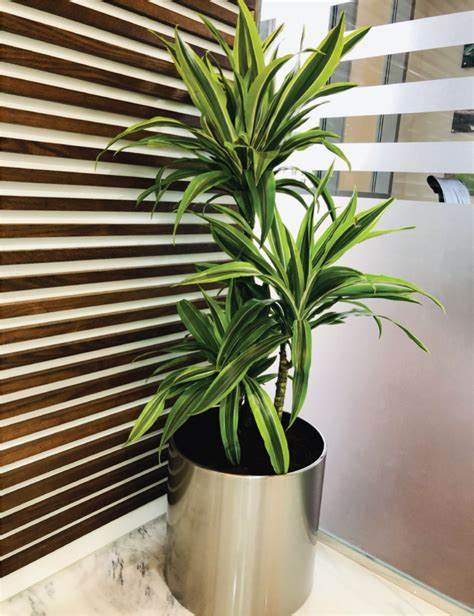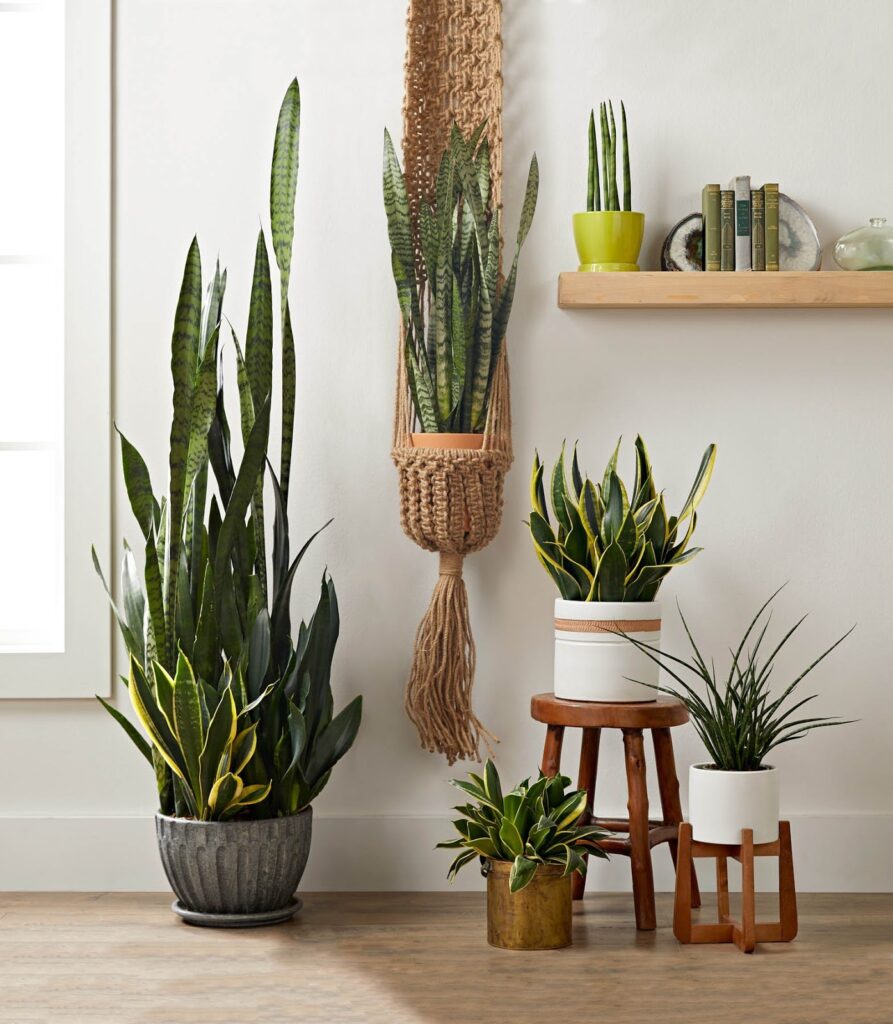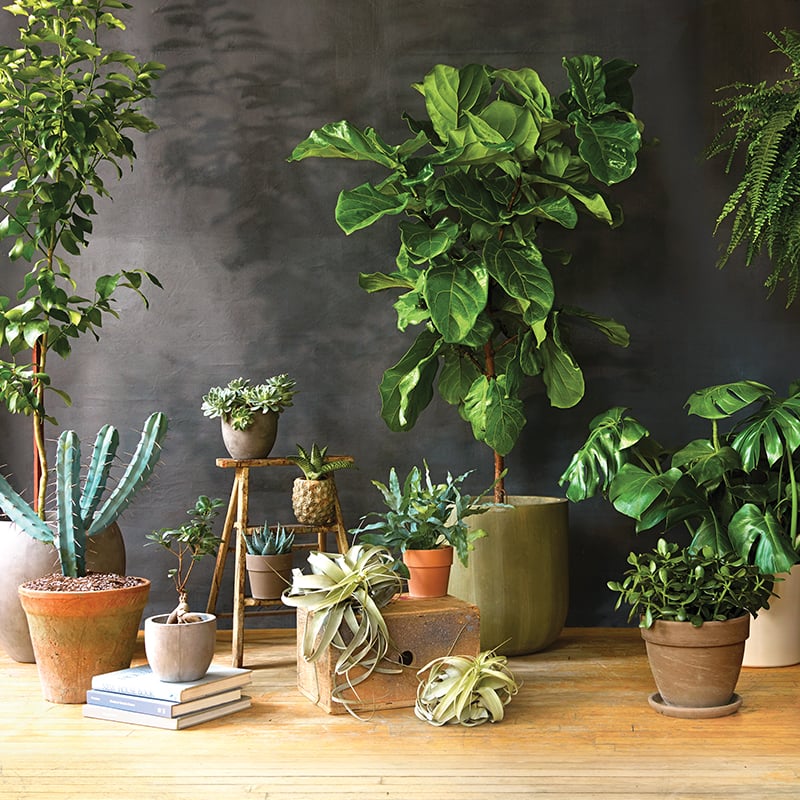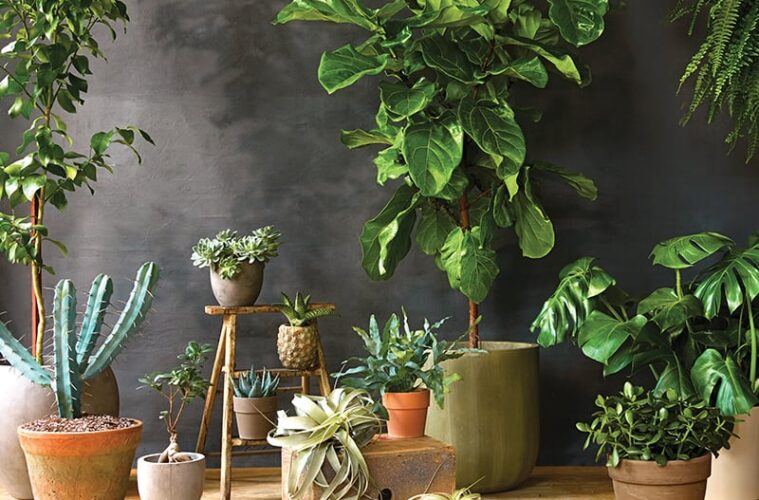It is becoming increasingly accepted that nature significantly impacts the creation of aesthetically pleasing and functional architectural design. Indoor and outdoor plants have become increasingly important components of contemporary architecture design. Below, we will examine how plants contribute to the vibrancy of both interior and exterior spaces.
Indoor plants magic

source: pinterest.com
Biophilic design– The movement promotes the health and happiness of its followers by emphasizing the value of bringing the outdoors inside. Houseplants are the personification of this idea since they provide several benefits, including cleaner air, reduced stress, and increased inspiration.
Aesthetic Appeal- Houseplants are like living artworks, with bright foliage and beautiful shapes breaking up the hard corners of contemporary decor. Architects use Large, dramatic indoor plants more frequently as design elements to grab attention and provide depth to an interior.
Separation of space-Plants can be utilized as organic boundaries between spaces. Consider utilizing tall potted plants as visual dividers instead of conventional partitions or walls to keep the space open and breezy.
Sustainability– picking the right houseplants might help you follow green building guidelines. Picking native plants requiring less care will reduce the water and care you put into your indoor garden, making them more sustainable.
The beauty of outdoor plants

source: pinterest.com
Green roofs and walls- incorporating green roofs and walls has made our understanding of good architecture take a different perspective. Vegetation on rooftops, or green roofs, aids in thermal insulation water management and lessens the impact of the urban heat island. Living walls, often vertical gardens, maybe a dramatic design feature, turning barren facades into verdant canvases.
Courtyards and Atriums– Architects are incorporating Open-air courtyards and atriums into building designs. In addition to letting in more fresh air and light, these openings provide room for visually striking and restful focal gardens.
Outdoor Living Spaces- The boundary between indoor and outdoor living areas is often porous in contemporary buildings. Homeowners may easily move from indoor comfort to outside appreciation because of the design’s seamless incorporation of patios, decks, and terraces. Plants placed outdoors in these areas improve their aesthetic value and increase the area’s privacy and calmness.
Sustainable Landscaping– green landscaping is an increasingly important trend in outdoor building construction. Reduce your water use, your maintenance expenses, and your influence on the environment without sacrificing the natural beauty of your yard by employing xeriscaping techniques and installing water-efficient irrigation systems that use native plants.
Disadvantages of incorporating plants into building designs

source: pinterest.com
- Indoor plants need regular watering, trimming, and pest management like any other living thing. They require consistent care and attention to ensure outdoor plants’ survival in various climates.
- Structural Considerations must be considered when designing a facility that will include huge or heavy plants.
- To ensure the plants’ life and reduce the amount of time spent on upkeep, it’s important to select species that thrive in the local environment and microclimates.
- For indoor plants, proper illumination is fourth on the list of requirements. Using artificial lighting should complement natural light, which architects should consider.
Conclusion
The seamless integration of inside and outdoor plant life makes contemporary buildings easily identifiable. These green features are aesthetically pleasing and provide several benefits, such as enhancing air quality, promoting wellness, cutting energy costs, and making pleasant outdoor areas. We may anticipate even more forward-thinking and environmentally friendly designs that skillfully incorporate nature into our built environment as architects and homeowners come to appreciate plants for their transforming potential. This results in aesthetically pleasing environments and encourages individuals to feel more at home with nature.



